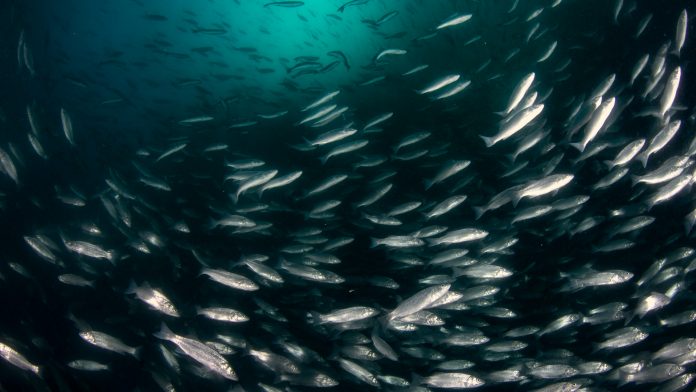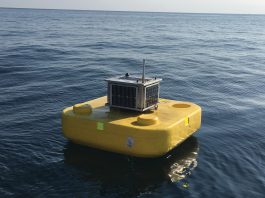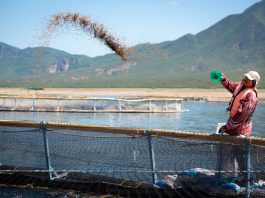Following the publication of the SOFIA 2020 report, Senior Aquaculture Officer at the Food and Agriculture Organization of the United Nations, Dr Matthias Halwart, spoke to The Innovation Platform about the challenges facing the aquaculture industry.
Every second year, the Food and Agriculture Organization of the United Nations (FAO) highlights the role of fisheries and aquaculture in providing food and employment across the globe. Its State of World Fisheries and Aquaculture (SOFIA) 2020 report has a particular focus on sustainability and conserving the world’s oceans and seas.
Following the publication of the report, the FAO’s Senior Aquaculture Officer, Dr Matthias Halwart, spoke to The Innovation Platform’s International Editor, Clifford Holt, about the challenges facing the aquaculture industry and what is being done to overcome them.
To begin, could you outline what you feel are the main points raised by SOFIA 2020?
Today, more fish are being consumed around the world than ever before, and this is something that is set to rise. Global fish consumption has doubled since the 1960s, and the global trade in fish is also rising, particularly in and among developing countries.
SOFIA is our flagship report and contains a lot of information. SOFIA 2020 highlights the fact that total fish production has again reached an all-time high, and that in itself is significant. Globally, some 179 million tonnes of fish were produced in 2018, 156 million tonnes of which were for direct human consumption, and much of this increase can be attributed to the growth in the aquaculture sector since the 1980s.
Since 2014, aquaculture has provided more fish for human consumption than capture fisheries, and that trend is likely to continue. It is also important to highlight that the bulk of aquaculture production, some two-thirds, is from inland waters (rather than from marine waters, which tends to receive the majority of the media’s attention). This means that small scale producers in developing countries are responsible for much of the growth that we are seeing, and it was therefore appropriate that our FAO Members place a focus on small scale producers in meetings such as the Committee on Fisheries (COFI), the 34th session of which was held in February this year.
SOFIA 2020 also highlights the differences between fed and non-fed aquaculture and, moreover, how these two sub sectors, as they may be termed, have developed. The report essentially shows that fed aquaculture is now outpacing non-fed aquaculture. Nevertheless, the importance of non-fed aquaculture remains very high, and this sub-sector’s annual production continues to expand in absolute terms.
The aforementioned Committee on Fisheries is the forum where we typically present the SOFIA report, and while this was delayed a little due to the impacts of the COVID-19 pandemic, the 2021 meeting saw FAO’s membership take note of the fast-growing aquaculture sector and called on us for more recognition and support, including for small scale aquaculture producers.
The report calls for new mechanisms to support the effective implementation of policy and management regulations for sustainable fisheries and ecosystems as the only solution to ensure fisheries around the world are sustainable. This may/should also involve looking at best practice from more successful policies and measures in areas where fisheries management is not in place or is ineffective. Are there any particular examples of where things are being done well? And how would you like to see the less progressive areas learning from them?
From an aquaculture perspective on sustainability, one of the mechanisms that has worked really well in the past is the adoption of an ecosystem approach. Of course, that also exists for fisheries, and it is a strategy that works to integrate the activity within the wider ecosystem, thereby promoting sustainable development, equity, and the resilience of the many links between social and ecological systems. Being a strategy, this ecosystem approach to aquaculture is not really about what is being done, but more about how it is being done. It also places a significant emphasis on the participation of all relevant stakeholders.
The ecosystem approach also requires institutions and associated management systems to be strengthened. This means that the integrated approach to aquaculture can then be fully implemented and, moreover, that it fully takes into account the needs of and impact on other sectors and the stakeholders involved in them. Moving forward, the key to this approach will be to develop institutions that are capable of integration, especially in terms of agreed upon objectives and standards.
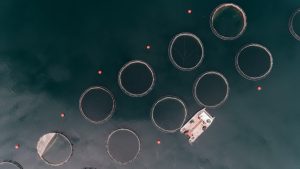
When it comes to how I would like to see less developed areas learning from this, we have a number of mechanisms in place that can enable this to happen, which are mainly fostered through the Guidelines on Sustainable Aquaculture which FAO Members asked us to develop. The purpose of these guidelines is to provide very practical guidance to government authorities and policy makers which, of course, promote the implementation of the Code of Conduct for Responsible Fisheries, and thus the engaging and enabling of aquaculture to effectively participate in the implementation of the SDGs (Sustainable Development Goals) and the 2030 Agenda for Sustainable Development.
The guidelines will really help countries because while we have quite a lot already, it is clear that our membership wants us to consolidate them, review them in light of their validity, and update those that need updating. The guidelines that are currently being prepared will help countries in their capacity development programmes for the sustainable management of aquaculture, and that is a very important process. We are facilitating that through expert consultations at both the global and regional levels, where aquaculture is taking place. The process is very much guided by the Subcommittee on Aquaculture, a COFI subcommittee.
Every two years, we distribute the Code of Conduct for Responsible Fisheries questionnaire to countries. This is essentially a self-assessment of how well they are performing on certain aspects of the code. As the Secretary of the COFI Subcommittee on Aquaculture, in the future I would like to see the development of a matchmaking-type mechanism which will enable us to partner those countries with a less positive self-assessment with a country with a more positive one so that they can learn from and help one another.
In addition, we have two major events taking place this year – the Global Conference on Aquaculture – Millennium +20 in September in Shanghai, China, and the 11th session of the COFI Subcommittee on Aquaculture in November in Mexico. The COFI subcommittee is an intergovernmental forum so it’s important for the exchange of ideas and information, as well as in terms of agreeing on the way forward, especially in achieving the SDGs.
How important is the aquaculture sector to the UN’s SDGs? And, to take this a little further – the report says that it is unlikely that SDG Target 14.4 (to end overfishing of marine fisheries) will be achieved. What more needs to be done? Is there time?
I think the role of aquaculture to achieve the SDGs is a very important one. And in more general terms, of course, agriculture, forestry, and fisheries etc. (the agricultural sectors, as we call them), produce all this food to feed, and provide for, the needs of humanity. They also employ one in three of the world’s workers. They provide important livelihoods for many rural households, totalling around 2.5 billion people. They are the sectors that most impact the way land and water, biodiversity, and genetic resources are managed, and therefore central to many of the SDGs. Furthermore, I think they will directly affect the success of SDG one: ending poverty; SDG two: ending hunger; as well as the SDGs concerning health and wellbeing, access to water, climate action, life below water, and life on land.
Decision making really requires a clear understanding of the synergies and trade-offs that exist across and within the various dimensions of sustainability. Striking an appropriate balance between development and environmental protection in a sustainable and equitable manner is a complex issue, and many details need to be considered.
It is important to note that the FAO and its Members jointly produced a common vision of how sustainable food and agriculture can be achieved and agreed, during our highest statutory body meetings – in the technical sectors of agriculture, forestry, and fisheries/aquaculture – on five principles that really need to be addressed and implemented if we want to achieve sustainability. These are important factors to consider given this broad agreement across the membership.
Saying that, we must all be aware of how 2030 is just around the corner so it is all hands on deck, everybody needs to work together. We have some really good frameworks and approaches to help get things done and that makes us hopeful. On the other hand, if I look at the current situation with the pandemic, I find it hugely frustrating that we are not able to do more in member countries at the moment, as we would normally do.
What role do you hope the FAO Hand-in-Hand Initiative will play in the future?
I think the Hand-in-Hand Initiative is a very important one. It is exciting in the sense that it is really using the most sophisticated tools available, including geospatial modelling and analytics, to apply the latest technological developments for the benefit of raising incomes and reducing inequities and vulnerabilities of the rural poor.
The Hand-in-Hand Initiative works at various levels and strengthens international co-operation, but also within countries, and offers data to better identify where investments could have the most impact. I think being able to integrate the Hand-in-Hand tools, and the initiative, with the self-reporting of the countries on the Code of Conduct for Responsible Fisheries and linking it up with this development on the guidelines for sustainable aquaculture is very relevant. This kind of matchmaking process of connecting countries, sharing experiences, helping them to learn from each other is an exciting development.
In fisheries and aquaculture, it is estimated that 35% of the global harvest is either lost or wasted every year. Addressing this can lead to a reduction in pressure on fish stocks and contribute to improving resource sustainability, as well as food security. How, then, would you like to see this being addressed? And when it comes to improving fish health, how important is it for issues such as sea lice, for example, to be properly managed? Should more funding/attention be directed towards R&D designed to provide healthier environments for fish stock?
Of course, fish loss and waste are big issues. However, I would probably caution against placing fisheries and aquaculture under the same umbrella, because hunting and farming are so fundamentally different, and in that line of thinking, I would argue that there is probably much less waste in aquaculture compared to fisheries.
Looking at the value chain, of course, all aquatic products, whether fished or farmed, eventually come to a point where they are harvested, then processed and marketed. Some of the major losses along the value chain occur in services and in infrastructure. For instance, poor road access, unsanitary storage conditions, and so on, and this is on the governance side. We need better standards to promote good handling, hygiene, and then having better implementation of those standards that already exist.
The FAO has been working on reducing the loss of perishable products like fish through the FAO-Thiaroye Processing Technique (FTT) which is about improving smoking practices. This innovative technique of fish drying and smoking them is also designed to leverage some of the local strengths in Africa and was developed collaboratively with colleagues at the Senegal International Training Centre. Another example would be the use of by-products in fishmeal and fish oil through the production of fish silage, and there are also some nice examples from member countries. And of course, there are a number of other examples from the fisheries sector.
In terms of fish health, we are advocating and promoting a Progressive Management Pathway for Aquatic Biosecurity. Our FAO Members have indicated that they consider biosecurity to be very important and they would actually like more funding to be attributed to this subject. So, certainly from the FAO side, we consider improvements to fish health management as absolutely critical for the sustainable development of aquaculture, and biosecurity is one of our major areas of work.
There are a number of issues facing aquaculture in biosecurity which include trans-boundary aquatic animal diseases, food safety issues, the use of antimicrobials, but also biological invasions, invasive species and some aspects of climate change. I would say the key for all of this is ‘prevention, prevention, prevention’.
Concerning sea lice, this highlights an important aspect of biosecurity in that farmed plants and animals can, on the one hand, catch diseases or parasites from wild stocks, and at the same time they can infect that stock. So, it is essential to understand this connectivity between aquaculture and the environment as part of an ecosystem. Fish health is also quite intimately connected with fish welfare and I think this is another important issue that we will need to look at in more detail in the future. We have addressed this issue through a number of publications in order to increase awareness and highlight its importance with our membership and various stakeholders.
It is reported that one out of two seafood workers are women, and yet these women are often assigned the most unstable roles, or poorly paid or unpaid positions that require lower qualifications – most often in the secondary sector – and are under-recognised or not recognised at all in the sector. Given that women play a crucial role throughout the fish value chain, providing labour in both commercial and artisanal fisheries and acting as small-scale entrepreneurs where capital allows, how can a better gender balance be achieved in the sector moving forwards? What are the main barriers to this?
You are absolutely right about the important role of women in the sector. There is compelling evidence that eliminating gender-based inequalities will significantly contribute to achieving food security and better nutrition. From a policy perspective, it is absolutely essential that women’s contribution to food security and nutrition is acknowledged, and that barriers to gender equality are tackled through an enabling policy and legal environment.
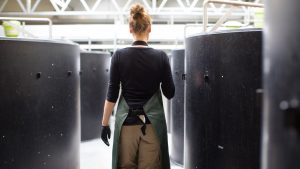
Some of the issues facing women are really in regard to the unbalanced access to land, services, markets, and technology. One of the first steps in making good decisions about any problem is starting with data and this is a fundamental problem that we have with gender. To carry out a proper gender analysis, policymakers would need access to gender-related statistics and, at present, there is only a limited amount of reliable, gender-sensitive, statistical data available at a national level that relates to food production and to rural livelihood strategies. This, in turn, means that surveys may need to be commissioned to really enhance the evidence and ensure informed policymaking, and that could be done through a variety of means such as household surveys, questionnaires, attitude studies, and seasonal labour profiles.
In general, the guidance for stakeholders is to conduct a stepwise approach, starting with a gender analysis, to understand the gender dimensions and their influence on food security and nutrition. Then, follow that up by mapping the landscape in terms of gender equality and women’s empowerment. And subsequently, examining the policy framework and looking for options and entry points where policies intersect and, finally, understanding the political economy and how it influences the policy agenda. I should also add that we are taking this issue very seriously in the COFI Subcommittee on Aquaculture, we have the next session in November in Mexico and, in fact, one of the agenda items that we will have is on this subject – looking at social issues in the sector, and specifically at the issue of gender. Countries typically take around two to three hours to discuss an agenda item, exchange experiences, and make recommendations on how they can better address this to support the SDGs.
COVID-19 began to emerge as the report was being prepared. What have the major impacts of the pandemic been on the aquaculture sector, and how can the FAO respond and assist?
The COVID-19 pandemic has triggered a public health crisis followed by an economic one, which came out of the necessary measures taken by countries to contain the rate of infection. Even though COVID-19 does not affect fish, nor is it caused by the consumption of fish, still, of course, the fish sector is subject to the impact of the pandemic. This is due to changing consumer demands, but also through market access and logistical problems related to transportation and border restrictions. This, in turn, has serious implications on our fisheries and fish farmers’ livelihoods, as well as on food security and nutrition for people who rely heavily on fish for animal protein and essential micronutrients coming from aquatic products.
From the FAO side, in the fisheries division we established a COVID-19 task team to co-ordinate activities, and to provide some co-ordinated support on measures and interventions addressing the impact. A few months ago, we published a document on the COVID-19 impact and there were a number of key messages which were highlighted in this document, including that the food itself is not responsible for the transmission of the disease, sound principles for hygiene and sanitation, and how supply chains are susceptible to being disrupted, and sometimes completely stopped, due to measures arising from COVID-19 restrictions. Ultimately, each stage of the supply chain must be protected in order to ensure the continued availability of fish and fish products for the consumer in the end.
You can imagine how an aquaculture producer is affected if he or she suddenly cannot market their fish and have to maintain stock with additional feeding costs. There is also the change in consumer demand, in that consumers are now looking for packaged and frozen products – particularly from the second quarter of 2020 – that they can stock up on at home. Additionally, there is the closure of restaurants and hotels and thus a lower demand for high-value, fresh fish. The small-scale producers are so important in fisheries and aquaculture and we need to pay more attention to them, including, of course, on the women that have an important role in the value chain.
Matthias Halwart
Senior Aquaculture Officer
Food and Agriculture Organization of the United Nations
Matthias.Halwart@fao.org
www.fao.org/fishery/aquaculture/en
www.fao.org/about/meetings/cofi-sub-committee-on-aquaculture/en
Please note, this article will also appear in the fifth edition of our quarterly publication.

